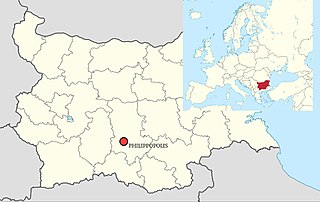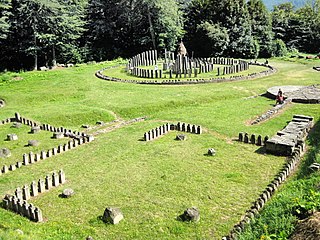 W
WAlexandreion (Greek), or Alexandrium (Latin), called Sartaba in the Mishna and Talmud and Qarn Sartaba in Arabic, was an ancient hilltop fortress constructed by the Hasmoneans between Scythopolis and Jerusalem on a pointy barren hill towering over the Jordan Valley from the west. It was likely named after Hasmonean king Alexander Jannæus.
 W
WThe Siege of Amida was a military investment of the Roman fortified frontier city of Amida by the Sasanian Empire. It took place in AD 359 when the Sasanian army under king Shapur II invaded the eastern provinces of the Roman Empire. Shapur wanted to exploit the absence of the Roman Emperor Constantius II who was overseeing affairs in the western part of the Empire. The city fell, but the strategic gain was little.
 W
WThe siege of Antioch took place when the Sassanids under Shapur I besieged the Roman city of Antioch in 253 after defeating the Romans in the Battle of Barbalissos.
 W
WThe Siege of Aracillum was a siege of the Cantabrian Wars that occurred in 25 BC. The battle took place between the forces of the Roman Empire, which consisted of five Roman legions commanded by Gaius Antistius Vetus and the forces of the Cantabri people, who had fortified the hill fort at Aracillum. The battle resulted in a Roman victory.
 W
WThe fall of Hatra, capital of the Kingdom of Hatra under Sanatruq II, took place in the 3rd century after a lengthy siege by the Sasanian king Shapur I. Hatra was plundered and abandoned, and its kingdom dissolved.
 W
WThe Siege of Hippo Regius was a siege from June 430 to August 431, carried out by the Vandals under their king Genseric against Roman defenders under Boniface, Count of Africa.
 W
WThe siege of Jerusalem in the year 70 CE was the decisive event of the First Jewish–Roman War, in which the Roman army captured the city of Jerusalem and destroyed both the city and its Temple. The Roman army, led by the future Emperor Titus, with Tiberius Julius Alexander as his second-in-command, besieged and conquered the city of Jerusalem, which had been controlled by Judean rebel factions since 66 CE, following the Jerusalem riots of 66, when the Judean provisional government was formed in Jerusalem.
 W
WThe siege of Masada was one of the final events in the First Jewish–Roman War, occurring from 73 to 74 CE on and around a large hilltop in current-day Israel.
 W
WThe Siege of Philippopolis was fought in about 250 between Rome and the Goths during the invasions of 249–253 at the Thracian city of Philippopolis, modern Plovdiv, Bulgaria. It was part of the long-running series of Gothic Wars.
 W
WThe Sack of Rome on 24 August 410 AD was undertaken by the Visigoths led by their king, Alaric. At that time, Rome was no longer the capital of the Western Roman Empire, having been replaced in that position first by Mediolanum in 286 and then by Ravenna in 402. Nevertheless, the city of Rome retained a paramount position as "the eternal city" and a spiritual center of the Empire. This was the first time in almost 800 years that Rome had fallen to a foreign enemy, and the sack was a major shock to contemporaries, friends and foes of the Empire alike.
 W
WThe Battle of Sarmizegetusa was a siege of Sarmizegetusa, the capital of Dacia, fought in 106 between the army of the Roman Emperor Trajan, and the Dacians led by King Decebalus.
 W
WThe Siege of Yodfat was a 47-day siege by Roman forces of the Jewish town of Yodfat which took place in 67 CE, during the Great Revolt. Led by Roman General Vespasian and his son Titus, both future emperors, the siege ended with the sacking of the town, the deaths of most of its inhabitants and the enslavement of the rest. It was the second bloodiest battle of the revolt, surpassed only by the Siege of Jerusalem, and the longest except for Jerusalem and Masada. The siege was chronicled by Josephus, who had personally commanded the Jewish forces at Yodfat and was subsequently captured by the Romans.